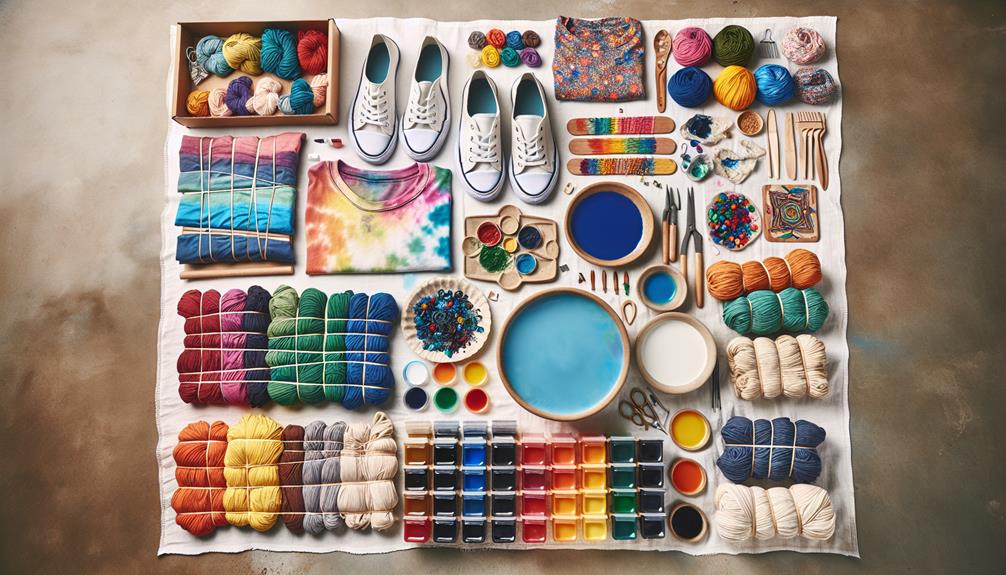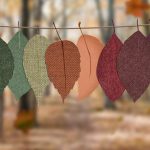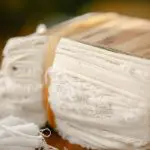I recently discovered that tie-dyeing is not limited to just t-shirts; it can be done on a variety of materials, expanding the possibilities for creativity. The question of what materials can be start dyed is one that often arises when beginning on a new project.
From classic cotton to luxurious silk, the options are vast. However, not all fabrics take to the dye the same way, leading to unique results. Understanding which materials work best could be the key to achieving the desired outcome in your tie-dye journey.
Table of Contents
Key Takeaways
- Cotton, polyester, silk, and denim are ideal fabrics for tie-dye due to their unique characteristics.
- Blending different fabrics enhances strength, texture, and dye retention in tie-dye projects.
- Popular choices like cotton, rayon, polyester, linen, and silk offer varied results in tie-dye creations.
- Proper preparation, dye application methods, and aftercare are crucial for maintaining vibrant tie-dye designs.
Cotton
When tie-dyeing, cotton is my top choice due to its absorbent nature and ability to hold vibrant colors well. Not only does cotton readily soak up eco-friendly dyes, making it a great option for those interested in sustainable fashion, but it also allows for intricate patterns and designs to stand out beautifully.
Engaging in DIY tie-dye tutorials with cotton garments opens up a world of creative possibilities. From spirals to stripes, the fabric's texture and structure make it easy to experiment with various techniques and achieve stunning results. Additionally, cotton's durability makes sure that your tie-dye creations will remain vibrant and eye-catching wash after wash.
Polyester
Exploring tie-dye with polyester fabric offers a modern twist on traditional techniques, blending vibrant colors with a sleek, contemporary aesthetic. When it comes to polyester tie-dye, the possibilities are endless. Here are some key points to contemplate:
- Polyester Tie Dye Techniques: Polyester requires different dyeing methods than natural fibers like cotton. Understanding the unique techniques for polyester will help you achieve the best results.
- Polyester Tie Dye Colors: Polyester can hold colors exceptionally well, allowing for bright and long-lasting hues. Experiment with a variety of colors to create stunning patterns on your polyester garments.
- Heat Setting: Polyester requires heat setting to assure the colors stay vibrant and don't fade easily. Make sure to follow the specific instructions for heat setting your polyester tie-dye creations.
- Blending Colors: Polyester fabrics offer a smooth surface for colors to blend seamlessly. Try blending different colors together to create unique and eye-catching designs.
- Durability: Polyester is known for its durability, making it a great choice for tie-dye projects that will last a long time. Enjoy your vibrant polyester tie-dye creations for years to come.
Silk
Silk offers a luxurious canvas for tie-dye experimentation, combining elegance with vibrant color possibilities. When working with silk, selecting the right techniques to guarantee the colors adhere well and create stunning patterns is important. One popular method is Shibori, a Japanese tie-dye technique that involves folding, twisting, or bunching the silk fabric before applying the dye. This technique results in unique, intricate patterns that enhance the luxurious feel of silk garments.
Silk colors play an important role in tie-dye projects. The rich, lustrous nature of silk allows for dyes to appear more vibrant and intense, creating a striking visual impact. When choosing colors for silk tie-dyeing, consider using jewel tones like deep blues, emerald greens, and royal purples to complement the fabric's sheen. These colors can elevate the elegance of silk garments and add a touch of sophistication to your creations.
Experimenting with different silk techniques and colors can lead to truly breathtaking results, transforming plain silk fabric into wearable works of art.
Denim
For denim enthusiasts looking to expand their tie-dye repertoire, the durable fabric offers a versatile and rugged alternative to the luxurious silk canvas. Denim tie dye styles are a fantastic way to inject personality into your wardrobe.
Here are some ideas to get you started:
- Traditional Spiral Pattern: Create a classic tie-dye look on your denim pieces with vibrant spiral patterns.
- Ombre Effect: Experiment with shades of indigo and white to achieve a trendy ombre effect on your denim garments.
- Bleach Wash: Give your denim a unique twist by incorporating bleach to create eye-catching patterns and designs.
- Geometric Designs: Use tape or stencils to achieve sharp lines and geometric shapes in your tie-dye creations.
- Reverse Tie Dye: Explore the reverse tie-dye technique on denim for a modern and edgy look.
With these denim tie dye patterns, you can transform your jeans, jackets, or even bags into stylish and personalized pieces that stand out in any crowd.
Rayon
When tie-dyeing rayon fabric, considering its unique properties is vital for vibrant and long-lasting results. Rayon is a semi-synthetic fiber made from cellulose, which gives it a smooth and soft texture similar to natural fibers. To achieve the best rayon tie-dye patterns, it's important to pre-wash the fabric to remove any finishes that may inhibit dye absorption. Additionally, rayon can be delicate, so using gentle dyeing techniques is key to prevent damage to the fabric.
One of the necessary rayon tie-dye tips is to use fiber reactive dyes specifically made for cellulose fibers like rayon. These dyes create vibrant and permanent colors on rayon fabric. When applying the dye, make sure to saturate the fabric thoroughly for even color distribution. Since rayon is prone to shrinking and stretching when wet, handle it with care during the dyeing and rinsing process to maintain the integrity of the fabric.
Linen
Alright, let's talk about linen for tie-dye!
Linen offers a crisp, breathable canvas for tie-dye techniques.
From soft pastels to bold, vibrant hues, linen can beautifully showcase a wide range of tie-dye colors.
Linen Tie Dye Techniques
Exploring various methods to achieve vibrant tie-dye patterns on linen fabric can result in stunning and unique creations. When it comes to tie-dyeing linen, there are several techniques that can be employed to achieve beautiful designs. Here are five techniques to explore:
- Fold and Bind Method: Create intricate geometric patterns by folding the linen in various ways before applying dyes.
- Ice Dyeing: Sprinkle dye powder on ice placed on scrunched-up linen for a watercolor effect.
- Shibori Techniques: Use traditional Japanese tying and binding methods to produce elegant patterns on linen.
- Dip Dyeing: Submerge sections of the linen in dye baths of different colors for a gradient effect.
- Spray Dyeing: Apply dyes using spray bottles for a more abstract and free-form design.
Linen Tie Dye Colors
To create vibrant tie-dye designs on linen, I recommend experimenting with a diverse range of colors to achieve stunning results. When exploring linen tie dye patterns, consider combining bold and subtle hues for a striking contrast. Drawing linen tie dye inspiration from nature can lead to beautiful earthy tones like forest green, sky blue, or sandy beige. Additionally, vibrant colors such as fuchsia, turquoise, and lemon yellow can add a playful touch to your linen creations. Here's a table showcasing some color ideas for your linen tie-dye projects:
| Bold Colors | Subtle Colors |
|---|---|
| Fuchsia | Forest Green |
| Turquoise | Sky Blue |
| Lemon Yellow | Sandy Beige |
Blend Fabrics
Blended fabrics offer a unique and versatile canvas for tie-dye creations. When it comes to tie-dyeing, these fabrics open up a world of possibilities due to their composition, which often combines different materials like cotton, polyester, rayon, or other fibers. Here are five reasons why blend fabrics are excellent for tie-dye projects:
- Color combinations: Blended fabrics can hold dye differently based on the materials in the blend, resulting in dynamic and varied color outcomes.
- Durability: The mix of fibers in blended fabrics can enhance the overall strength and longevity of your tie-dye creations.
- Texture play: Different fibers in the blend can create unique textures when dyed, adding depth and interest to your DIY projects.
- Color retention: Blended fabrics often retain dye well, ensuring that your vibrant hues stay vivid wash after wash.
- Versatility: Blends offer a wide range of fabric weights and textures, allowing for diverse tie-dye techniques and design possibilities.
Frequently Asked Questions
Can You Tie Dye Wool or Nylon Fabrics?
I can tie dye wool fabrics, but it has challenges due to its natural properties. Nylon fabrics are easier to tie dye with specific techniques. Overcoming dyeing misconceptions and experimenting with different fabrics can lead to unique results.
Are There Any Special Considerations When Tie Dyeing Denim or Linen?
When tie-dyeing denim or linen, it's important to think about color fastness and fading prevention. These fabrics can absorb dye differently, so prewashing them and using quality dyes will guarantee vibrant, long-lasting results. Be mindful of fabric composition for best outcomes.
How Does Tie Dyeing Polyester Differ From Tie Dyeing Silk?
Polyester and silk require different dyeing techniques. Polyester needs dye compatible with synthetic fibers, while silk works best with dyes for natural materials. Blending colors is easier with silk due to its absorbency. Care instructions vary, so follow guidelines for each fabric.
Can You Mix Different Types of Fabrics in the Same Tie Dye Project?
Yes, you can mix different fabric types in tie-dye projects. Consider fabric compatibility and dye absorption for best results. Color mixing can be exciting, but make fabrics blend well to avoid unwanted color variations.
Are There Any Specific Care Instructions for Maintaining Tie Dyed Blend Fabrics?
For maintaining tie-dyed blend fabrics, guarantee color fastness by washing in cold water separately. Use mild detergent and avoid bleach. Air dry to retain vibrancy. Follow care label instructions for best results and longevity of the colors.
- Are Wet Wipes Made From Nonwoven Fabric? - July 11, 2025
- A Look at Stitch-Bonded Nonwoven Fabrics - July 11, 2025
- What Is Thermal Bonded Nonwoven Fabric? - July 11, 2025






